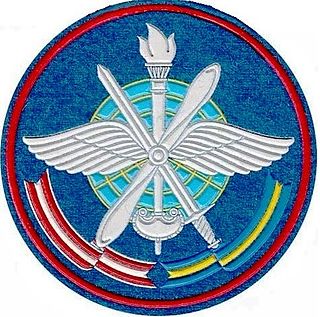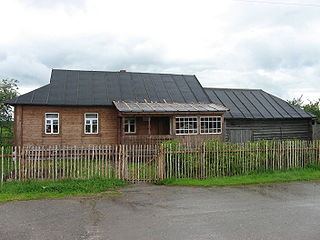 W
WYuri Alekseyevich Gagarin was a Soviet pilot and cosmonaut who became the first human to journey into outer space, achieving a major milestone in the Space Race; his capsule, Vostok 1, completed one orbit of Earth on 12 April 1961. Gagarin became an international celebrity and was awarded many medals and titles, including Hero of the Soviet Union, his nation's highest honour.
 W
WCité Gagarine was a housing project in Ivry-sur-Seine, France. It was built by the Communist Party of France government starting in 1961 and inaurated in 1963, and was a symbol of the vibrancy of Communism in France at the time. It was named for the Soviet cosmonaut Yuri Gagarin, the first human who went to space. Gagarin attended the inauguration of the housing project in 1963.
 W
WCosmonautics Day is an anniversary celebrated in Russia and some other former USSR countries on 12 April. In Poland an "International Day of Aviation and Cosmonautics" is celebrated on the same day. In 2011, at the 65th session of the United Nations General Assembly, 12 April was declared as the International Day of Human Space Flight in dedication of the first manned space flight made on 12 April 1961 by the 27-year-old Russian Soviet cosmonaut Yuri Gagarin. Gagarin circled the Earth for 1 hour and 48 minutes aboard the Vostok 1 spacecraft.
 W
WOn March 27, 1968, Yuri Gagarin, the first man to go into space, died together with pilot Vladimir Seryogin during a routine training flight, after the MiG-15 jet fighter they were flying crashed near Novosyolovo in the Soviet Union.
 W
W1772 Gagarin is a stony background asteroid from the central region of the asteroid belt, approximately 9 kilometers in diameter. It was discovered on 6 February 1968, by Russian astronomer Lyudmila Chernykh at the Crimean Astrophysical Observatory in Nauchnyj, on the Crimean peninsula. The asteroid was named after cosmonaut Yuri Gagarin.
 W
WGagarin is a large lunar impact crater that is located in the southern hemisphere on the far side of the Moon. To the southwest is the crater Pavlov and to the northeast lies Keeler. Closer to the rim are the craters Levi-Civita to the southwest, and Beijerinck to the north-northeast. Isaev lies entirely within the northwest rim of Gagarin. In contrast with the floor of Gagarin, Isaev has a floor with a somewhat low albedo.
 W
WGagarin Air Force Academy is a Russian military aviation academy located in Monino, Moscow Oblast.
 W
WThe Gagarin Cup is the trophy presented to the winner of the Kontinental Hockey League (KHL) playoffs, and is named after Soviet cosmonaut Yuri Gagarin, the first human in space. The Cup was supposedly named after Gagarin because the last possible game of the inaugural KHL season would take place on April 12, the anniversary date of Gagarin's flight.
 W
WGagarin, known until 1968 as Gzhatsk (Гжатск), is a town and the administrative center of Gagarinsky District of Smolensk Oblast, Russia, located on the Gzhat River, 240 kilometers (150 mi) northeast of Smolensk, the administrative center of the oblast. Population: 31,721 (2010 Census); 28,789 (2002 Census); 28,867 (1989 Census).
 W
WYuri Gagarin Street is a major street in the Mokotów district of Warsaw, named after the first man in space.
 W
WYelena Yurievna Gagarina is a Soviet and Russian art historian. She is the General Director of the State historical and cultural Museum-reserve Moscow Kremlin Museums, and the eldest daughter of the first cosmonaut Yuri Gagarin.
 W
WThe International Day of Human Space Flight is the annual celebration, held on 12 April, of the anniversary of the first human space flight by Yuri Gagarin (USSR). It was proclaimed at the 65th session of the United Nations General Assembly on 7 April 2011, a few days before the 50th anniversary of the flight.
 W
WKlushino is a village in Smolensk Oblast, Russia. It is situated on the old road between Vyazma and Mozhaysk, not far from Gzhatsk, and it was the site of a major battle during the Polish–Muscovite War (1605–18).
 W
WKosmonavt Yuriy Gagarin was a Soviet space control-monitoring ship or Vigilship (Veladora) that was devoted to detecting and receiving satellite communications. Named after cosmonaut Yuri Gagarin, the ship was completed in December 1971 to support the Soviet space program. The ship also conducted upper atmosphere and outer space research.
 W
WYuri's Night is an international celebration held every April 12 to commemorate milestones in space exploration. It is named for the first human to launch into space, Yuri Gagarin, who flew the Vostok 1 spaceship on April 12, 1961. In 2011, Yuri's Night was celebrated at over 567 events in 75 countries on seven continents. Yuri's Night is often called the "World Space Party". The launch of STS-1, the first Space Shuttle mission, is also honored, as it was launched 20 years to the day after Vostok 1, on April 12, 1981.
 W
WSoyuz TMA-21 ("Gagarin") was a Soyuz flight to the International Space Station (ISS). It transported three members of the Expedition 27 crew to the ISS, and docked at the station on April 6, 2011. TMA-21 is the 109th flight of a Soyuz spacecraft, the first of which launched in 1967. The Soyuz remained attached to the space station as a lifeboat, throughout the remainder of Expedition 27 and through the end of Expedition 28, and returned to Earth on September 16, 2011.
 W
WGagarin's Start, also known as Baikonur Site 1 or Site 1/5 is a launch site at Baikonur Cosmodrome in Kazakhstan, used for the Soviet space program and now managed by Roscosmos.
 W
WVostok 1 was the first spaceflight of the Vostok programme and the first human spaceflight in history. The Vostok 3KA space capsule was launched from Baikonur Cosmodrome on April 12, 1961, with Soviet cosmonaut Yuri Gagarin aboard, making him the first human to cross into outer space.
 W
WThe Yuri A. Gagarin State Scientific Research-and-Testing Cosmonaut Training Center is a Russian training facility responsible for training cosmonauts for their space missions. It is in Star City of Moscow Oblast, a name which may refer to the facility itself or to its grounds.